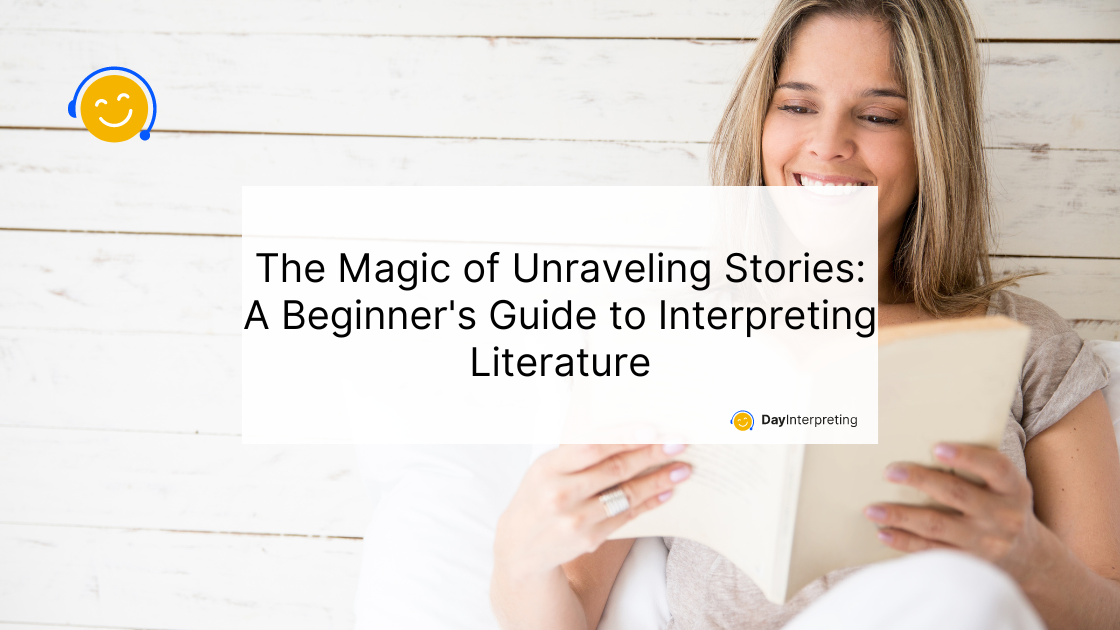Have you ever wondered what makes a story come alive, or how authors weave their words to create worlds beyond our imagination? Well, buckle up, because we’re about to embark on a thrilling journey into the art of interpreting literature.
Chapter 1 – The Gateway to Imagination
Literature is like a magical gateway that transports us to far-off lands, introduces us to fascinating characters, and invites us to explore the depths of human emotions. But how do we unlock the secrets hidden within the pages of a book? How do we interpret the true meaning of a piece of literature?
The Power of Words
First things first, let’s talk about words! Words are the building blocks of literature, and authors use them like wizards casting spells. From vivid descriptions to powerful dialogues, every word serves a purpose in creating the literary spell that captivates readers.
Painting Pictures with Descriptions
Close your eyes and imagine a lush, green forest or a bustling cityscape. That’s the magic of descriptive language! Authors paint pictures with their words, allowing readers to step into the shoes of the characters and experience the world they inhabit.
Chapter 2: Characters, The Heroes of the Tale
Now that we’ve learned the language of literature, let’s dive into the heart of every story – the characters! Characters are like friends we meet on our literary adventures, each with a unique personality and role to play.
Getting to Know the Heroes
Characters drive the plot forward, and understanding their motivations and struggles is key to unlocking the story’s meaning. Who are the protagonists, and what challenges do they face? What about the villains – what drives them to act the way they do?
Character Development
Just like real people, characters grow and change throughout the story. Pay attention to their journey, from the first page to the last. This character development is like watching a caterpillar transform into a butterfly, adding depth and richness to the narrative.
Chapter 3: Plot Twists and Turns
Hold onto your hats, because here comes the exciting part – the plot! A well-crafted plot is like a rollercoaster ride, full of twists, turns, and unexpected surprises.
The Beginning: Setting the Stage
Every story has a beginning, where the stage is set, and characters are introduced. This is where the author lays the foundation for the adventure that lies ahead. What’s the setting? When and where does the story take place?
The Climax: The Heart of the Matter
The climax is the pinnacle of excitement, where the story’s tension reaches its peak. This is the moment we’ve all been waiting for – the big reveal or the epic showdown that determines the fate of our beloved characters.
The Resolution: Tying Up Loose Ends
After the roller coaster ride, there’s a moment of reflection. The resolution ties up loose ends, answering lingering questions and providing closure. It’s like reaching the end of a treasure hunt and discovering the ultimate prize.
Chapter 4: Themes and Hidden Messages
As we continue our literary adventure, let’s uncover the hidden treasures within the text – the themes and messages that give stories depth and meaning.
Themes: The Threads That Connect Everything
Themes are like invisible threads weaving through the story, connecting characters, events, and emotions. Love, friendship, bravery – these universal themes resonate with readers across time and cultures.
Symbolism: Decoding Hidden Meanings
Authors often use symbols to convey deeper meanings. A rose might symbolize love, while a storm could represent conflict. Decoding these symbols adds an extra layer of understanding to the narrative.
Chapter 5: The Joy of Interpretation
Congratulations! You’ve now become a literary explorer, navigating the vast landscapes of literature. But the journey doesn’t end here; it’s time to revel in the joy of interpretation.
Finding Your Own Meaning
Interpreting literature is a personal journey. What resonates with one reader might be different for another. Trust your instincts, and don’t be afraid to find your own meaning in the words on the page.
Discussing and Sharing Ideas
Literature is a communal experience. Engage in discussions with fellow readers, join book clubs, and share your thoughts. You’ll be amazed at the diverse perspectives that can enrich your understanding of a story.
Final Thoughts
As we conclude our magical journey into the realm of interpreting literature, remember that every book is a treasure waiting to be discovered. With the power of words, the depth of characters, the excitement of the plot, and the richness of themes, literature invites us to explore, learn, and grow. So, dear reader, grab a book, embark on your own adventure, and let the magic of interpretation unfold!





0 Comments